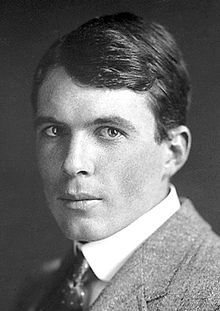William Lawrence Bragg
Claimed by Jason Lin, jlin328
An article on William Lawrence Bragg's life, accomplishments, and his impact on the modern world.

Personal Life
William Lawrence Bragg was born on 31 March 1890 in North Adelaide, South Australia as the son of William Henry Bragg, the elder professor of Mathematics and Physics at the University of Adelaide. Early on in his life, Bragg showed an interest in math and science. In 1905 he attended St Peter's College and then at the age of 16, he studied math, chemistry and physics at the University of Adelaide. After graduating from the University of Adelaide in 1908, Brag attended Trinity College, Cambridge in 1909. He received a major scholarship in mathematics even though he took the exam in bed with Pneumonia. Bragg would later transfer from mathematics to physics and graduated with first class honors in 1911.
Scientific Accomplishments
X-ray Crystallography
In 1912, during his first year at Cambridge, Bragg discovered that by observing how X-rays diffracted through a crystal, he could determine the positions of the atoms in the crystal's lattice structure. This was his famous Bragg's Law and his work on this law would lead to him winning the Nobel Prize in Physics in 1915.
Sound Ranging
During World War I and World War II, Bragg worked with William Sansome Tucker and Harold Roper Robinson and Henry Harold Hemming on developing sound ranging methods to determine the location of enemy weapons. Before Bragg began working on this, sound ranging was relatively inaccurate. Bragg realized that the nature of gun sounds was not well understood. He emphasized that to increase accuracy of sound ranging, the separation of the sound of the sonic boom of the shell from the sound of the actual shell firing was needed. His work with sound ranging earned allowed him the Military cross and the title of Officer of the Order of the British Empire.
Proteins
Connectedness
- How is this topic connected to something that you are interested in?
- How is it connected to your major?
- Is there an interesting industrial application?
See also
Are there related topics or categories in this wiki resource for the curious reader to explore? How does this topic fit into that context?
Further reading
Books, Articles or other print media on this topic
External links
References
This section contains the the references you used while writing this page